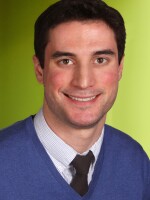There's an old promotional video the developer behind the Destiny USA megamall released several years ago. It includes images of glass-enclosed golf courses, huge hotels and helicopter tours of upstate taking off from Syracuse's Inner Harbor.
Despite ending by promising "grand opening, summer 2004," you won't see any of that on the shores of Onondaga Lake today.
All you'll see is an even bigger mall - despite developer Robert Congel winning a 30-year property tax break worth about $600 million as an incentive from the city to build the Disney Land-like attraction.
Congel was able to get out of building the whole project but keep the tax break through a loophole in his contract with the city.
Frostier tone
In the weeks since the city learned the ambitious project would not become reality officials have taken a frostier tone toward current development proposals.
Take, for example, negotiations between the city and a developer hoping to build a new off-campus bookstore and fitness center for Syracuse University. The developer says his company needs a 30-year property tax break in order to be able to afford the project.
"You have all of these grandeur ideas, then you should be able to finance this project," said Helen Hudson, a common councilor. "We just can’t keep exempting all of these entities."
If the project wins approval, the city will be giving out just its second-ever 30-year property tax break.
Another developer had the unfortunate timing of presenting before the council just days after Destiny USA's loophole was exposed. The proposal would spend $350 million redeveloping the Inner Harbor - the same land Congel once promised to transform.
After multiple hearings, the city did eventually approve the plans. And it looks like the tax break for the bookstore and fitness center may squeak past the council, too.
Development is "upside down"
Ben Walsh, the city’s deputy commissioner of neighborhood and business development, says public backing is still a necessary part of development in Syracuse.
"The fact is, most projects within the city are financially upside down," says Walsh. "In other words, developers cannot charge enough rent to cover improvements they make on their property. Therefore, but for a public incentive, many of these projects wouldn’t happen."
But Syracuse University economics professor Michael Wasylenko warns if a project needs too much support, it may not be the right project.
"If you really have to subsidize something a lot to get it done, is it economics?" he asks. "And if the private sector wouldn’t have done this, should we be poking our nose in there and [subsidizing] something to exist for the sake of it existing?"
Syracuse has to be careful about what projects it subsidizes, and for how long, says Wasylenko. But he says discerning between worthy and unworthy projects can be tough for cities, especially those attempting to break old habits of economic development.
The city tries to make sure each project proposal fits into its goals for development, according to the city's Bill Walsh, who concedes a city can only do so much to spur growth.
"I think we need to be honest with ourselves, as the government," Walsh says. "We can only influence what happens in the private market and in development so much."
As for the already projects approved for lengthy tax breaks by past administrations, Walsh says only time will tell how successful those will be.









